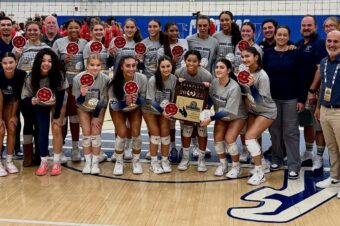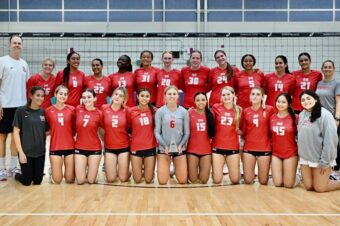BEHIND THE CLIPBOARD: Running the Risk
CalHiSports Insights October 9, 2015 SportStars 0
Strive to be a team player, but don’t let others keep you from protecting your body
I run for a good cross country team, and we do lots of mileage. My shins have started to hurt a little, and I don’t want to get shin splints — but if I mention that I need to skip a workout, my teammates tease me about it, so I run. What can I tell them so I can keep from getting shin splints?
—A.B., Walnut Creek
Peer pressure can be dangerous, in a lot of ways, and though getting shin splints might seem a lot less of a risk than trying to drive buzzed or going to that college party, they can turn into a serious and even life-long condition.
So number one, don’t think sore shins are no big deal. They are. Shin splints involve swelling in the lower leg and there is one cure: Rest. The worse the case, the longer the rest required to get back to normal (that is, pain-free running).
Girls are more vulnerable to shin splints than boys, but regardless of gender, left alone, shin splints can turn into stress fractures, and they can also be something that never completely goes away.
Number two, your friends aren’t really your friends if they’re making you feel bad about protecting your body. You only get one set of legs for your whole life, and ignoring shin splints would be like ignoring a toothache — the pain is trying to tell you that something is wrong and needs to be fixed. With a toothache, you might wind up having to wear a bridge the rest of your life; with a stress fracture in your tibia, you might never be able to do anything involving running or jogging.
Finally, where’s your coach in this situation? You should be talking to him or her about your pain. Now I do know that some cross country coaches rely on attrition for success: They start with 80 runners, run them mercilessly, and those who drop out (for shin splints or whatever reason) are just collateral damage. The ones who survive have bodies that can stand the miles, and some of those who survive will be fast enough to win meets.
If your coach is like that, it wouldn’t surprise me, because a team culture in which peers pressure peers to run when hurt is not a healthy one. As a friend of mine pointed out long ago, the winners don’t get a lot more money than the losers in high school sports, so why would anyone risk their health for a victory that will most likely be forgotten in a few months?
Look at it this way: If you ask most 40-year-olds who played high school sports what the won-loss record was of their teams, only a very few would know the answer. Ask them if they had a good experience, and they will remember — and if they’re hampered still by a high school injury, you can bet they will remember that more than anything.
Clay Kallam is an assistant athletic director and girls varsity basketball coach at Bentley High in Lafayette. To submit a question for Behind the Clipboard, email him at [email protected]
SportStars
SportStars Magazine: High School Sports Articles Online SportStars is your go-to source for the very best high school sports articles in California. Player and team profiles, game coverage, health and fitness tips and the largest Camps, Clinics & Combine resource for athletes. We're the story behind the stats.









No comments so far.
Be first to leave comment below.